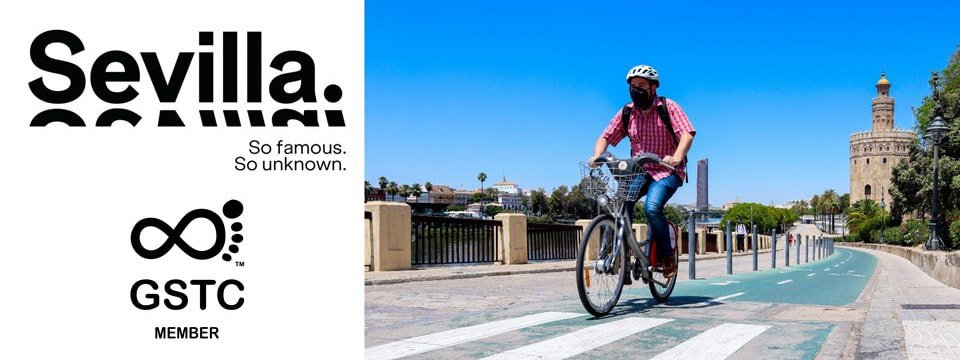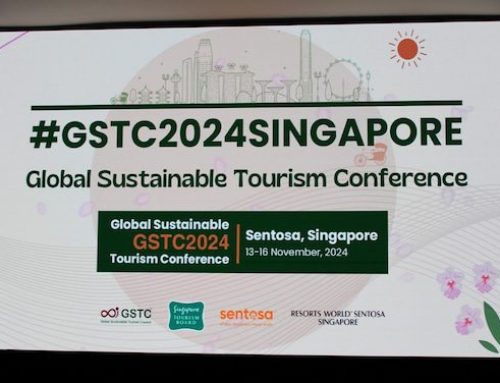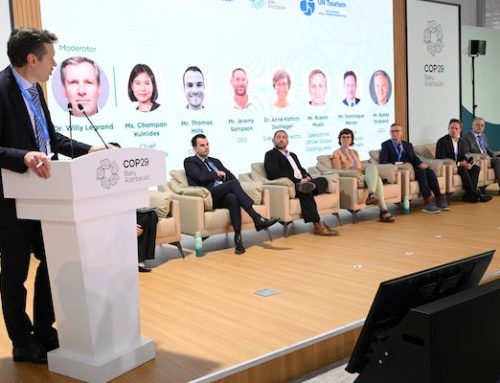The city of Sevilla has joined as a Member of the Global Sustainable Tourism Council (GSTC)

Tourism management in Seville by CONTURSA
The institution that oversees the development of a responsible tourism model in Seville is CONTURSA, a public company belonging to Seville City Council, which has taken on the responsibility for tourism promotion and information, as well as the management of major events, trade fairs and conferences. Aware of the impact that tourism has on the city and its inhabitants, CONTURSA’s main mission is to ensure that the wellbeing of Seville’s residents and visitors is balanced, making the city an example of coexistence that puts people at the centre of tourism policies.
“Sustainability is a shared responsibility that requires progressive and participatory learning for its proper management. The aim is to raise awareness among the citizens of Seville, visitors to the city and public and private organisations of the importance of sustainable tourism development. Our commitment is to lead the necessary changes, and to inspire those respectful attitudes that guarantee, through collective effort, a city by and for society as a whole”, said Antonio Jiménez, Managing Director of CONTURSA.
Seville, a city for environmental enjoyment and healthy coexistence
Seville, due to its heritage, as well as its geographical and social qualities, is a green city committed to the wellbeing of those who live in or visit it. Its streets wind through a sustainable world of buildings and squares, neighbourhoods and districts, but also historic gardens and parks arranged for strolling, sport and healthy coexistence.
The backbone of everything that happens in the city, the Guadalquivir River has historically defined the urban and economic development of Seville, and today it has its own discourse that provides quality of life, landscape richness and environmental value, as well as facilities for culture, leisure and sport in its surroundings.
With an age-old concern to give its citizens a breath of fresh air by incorporating natural environments into its urban discourse, Seville is the fifth city in Spain in terms of green areas per inhabitant. It is also the fourth city in terms of pedestrianised roads, having added important thoroughfares for neighbourhood and commercial coexistence; it has a public transport network that efficiently connects each urban area; and it has 200 kilometres of cycle lanes that run along its flat land, making it one of the best cities in the world for cycling.
This catalogue of solutions links Seville to the most sustainable, health and wellbeing-friendly cities in the world. In turn, Seville’s ecological challenges are aligned with the UN Sustainable Development Goals whose agenda extends to 2030.
GSTC Welcomes Sevilla
“We warmly welcome Sevilla, a unique and iconic destination due to its history, cultural and artistic heritage, and many other attractions. By joining GSTC, Sevilla confirms its commitment to a sustainable tourism management system,” says Luigi Cabrini, Chair of the GSTC.
GSTC encourages NTOs and DMOs (destinations) pursuing sustainability practices in development and management of tourism, to join as GSTC members and apply the GSTC Destination Criteria, as well as support local business to apply the GSTC Industry Criteria. Destinations can eventually aim for achieving certification by a GSTC-Accredited Certification Body as a sustainable tourist destination.





